
Eristalis arbustorum, the European drone fly, is an abundant Northern Hemisphere species of syrphid fly, originally officially described by Linnaeus in 1758 as Musca arbustorum. The name "drone fly" is related to its similar appearance to the drone of the honeybee. Hoverflies get their names from the ability to remain nearly motionless while in flight. The adults are also known as flower flies as they are commonly found on and around flowers from which they get both energy-giving nectar and protein rich pollen. The larvae are aquatic filter-feeders of the long-tailed type.

Eristalis nemorum is a species of hoverfly. It is found in the Palearctic and in the Nearctic.
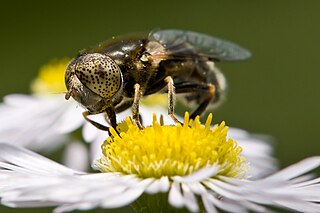
Eristalinus aeneus, the common lagoon fly, is a fairly common species of syrphid fly observed throughout the United States and Europe. Hoverflies can remain nearly motionless in flight. The adults are also known as flower flies for they are commonly found on flowers, from which they get both energy-giving nectar and protein-rich pollen. The larvae occurs along shorelines in rock pools containing large amounts of decaying seaweed.
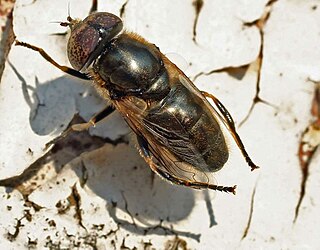
Eristalinus sepulchralis is a European species of hoverfly. The species are brownish-white from a close up, and look like a wasp. From a distance though, they are yellowish-black coloured, and look like a bumble bee. The species can be found throughout Europe in the Baltic states, North Europe, Central, Southern and Western Europe and across the Palaearctic to Kamchatka, Japan, China and India. Finland, Great Britain, Hungary, Ireland, Norway, and the Netherlands.

Eristalis intricaria is a European species of hoverfly. It is a furry bee mimic, superficially resembling Merodon, though Merodon have all black leg tibiae, as opposed to partly yellow. E. intricaria is somewhat variable in colour pattern, and some attempts at naming varieties have been tentatively made. Flight time of adults in the UK are from March to September. It is generally widespread, but is seldom seen in large numbers. Habitat is woodland or marshland.

Chrysogaster solstitialis is a European species of hoverfly.
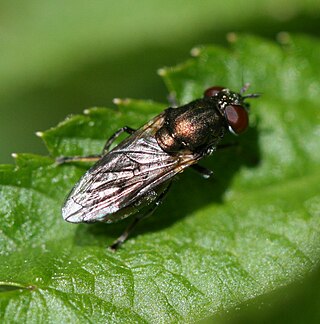
Orthonevra nobilis is a species of hoverfly.

Eristalis abusiva is a European species of hoverfly. It is similar to Eristalis arbustorum.
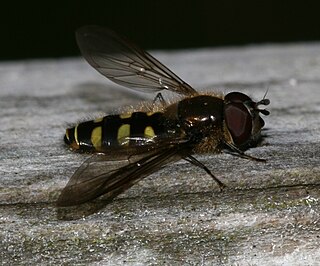
Melangyna lasiophthalma is a Holarctic species of hoverfly.
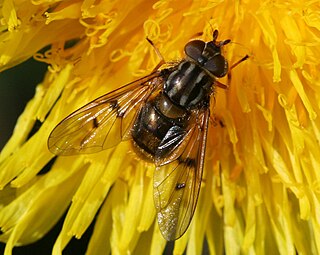
Ferdinandea cuprea is a European species of hoverfly notable for its brassy abdomen. The larvae have been found in sap from trunk damage on oak and ash.
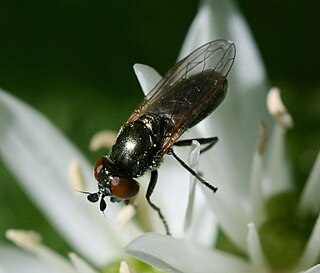
Lejogaster metallina is a Palearctic species of hoverfly.
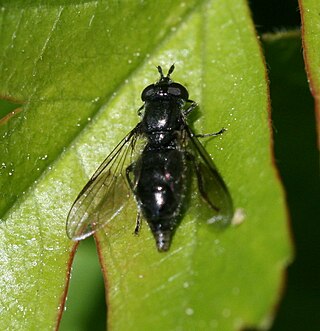
Pipiza austriaca is a species of hoverfly, from the family Syrphidae, in the order Diptera.

Parasyrphus vittiger is a species of hoverfly, from the family Syrphidae, in the order Diptera.
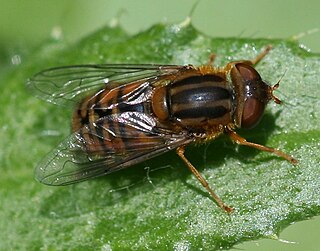
Parhelophilus versicolor is a European hoverfly.

Platycheirus angustatus is a species of hoverfly. It is found in many parts of the Palearctic, and in the Nearctic.

Orthonevra geniculata is a species of hoverfly found in the Palearctic.

Neoascia meticulosa is a species of hoverfly.
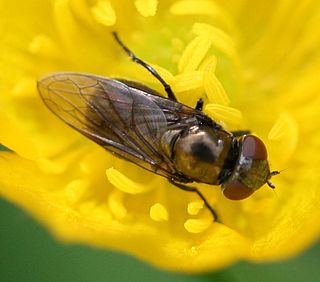
Chrysogaster virescens is a European species of hoverfly.

Neoascia tenur is a Palearctic species of hoverfly.

Mallota cimbiciformis is a Palearctic hoverfly.





















